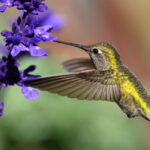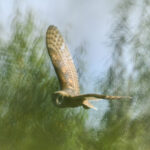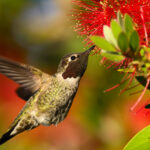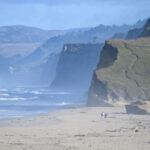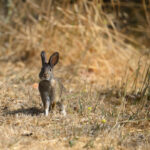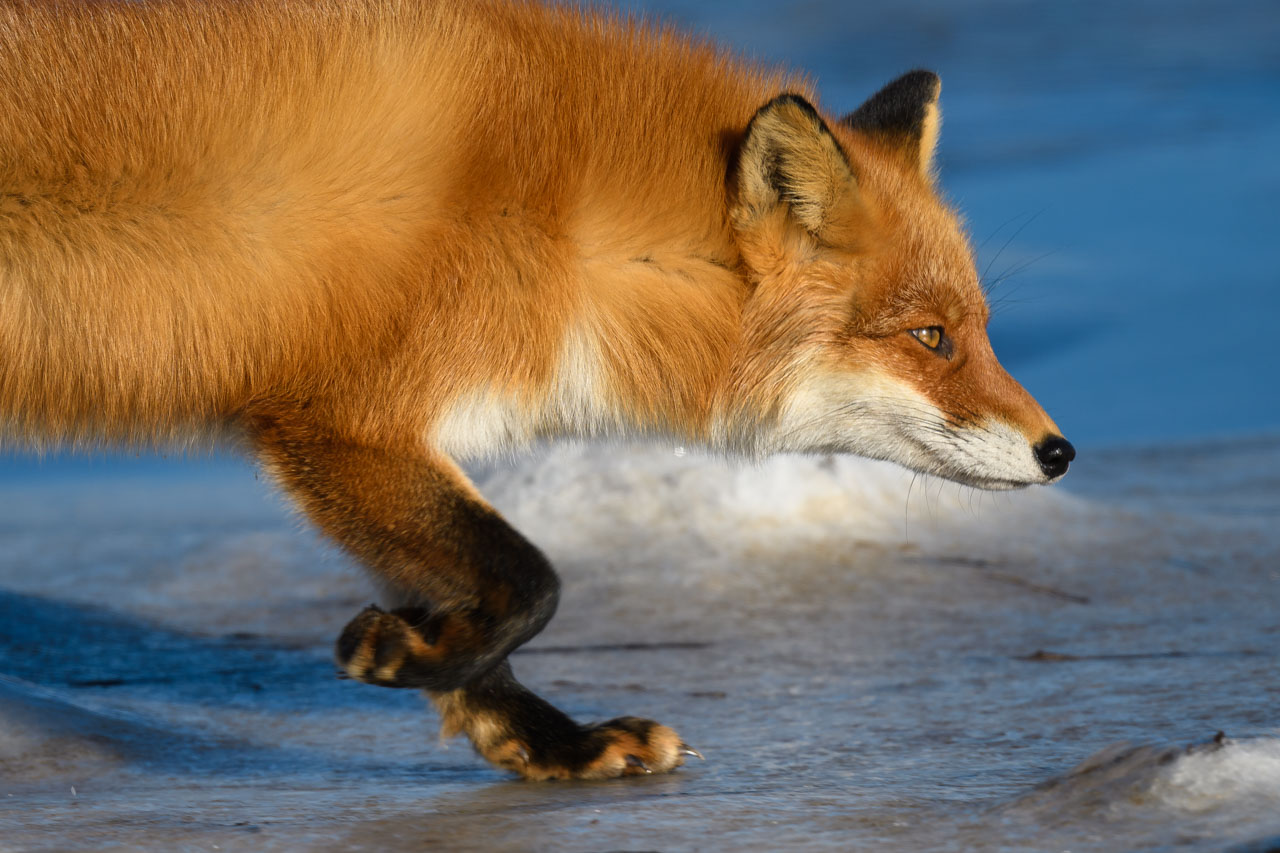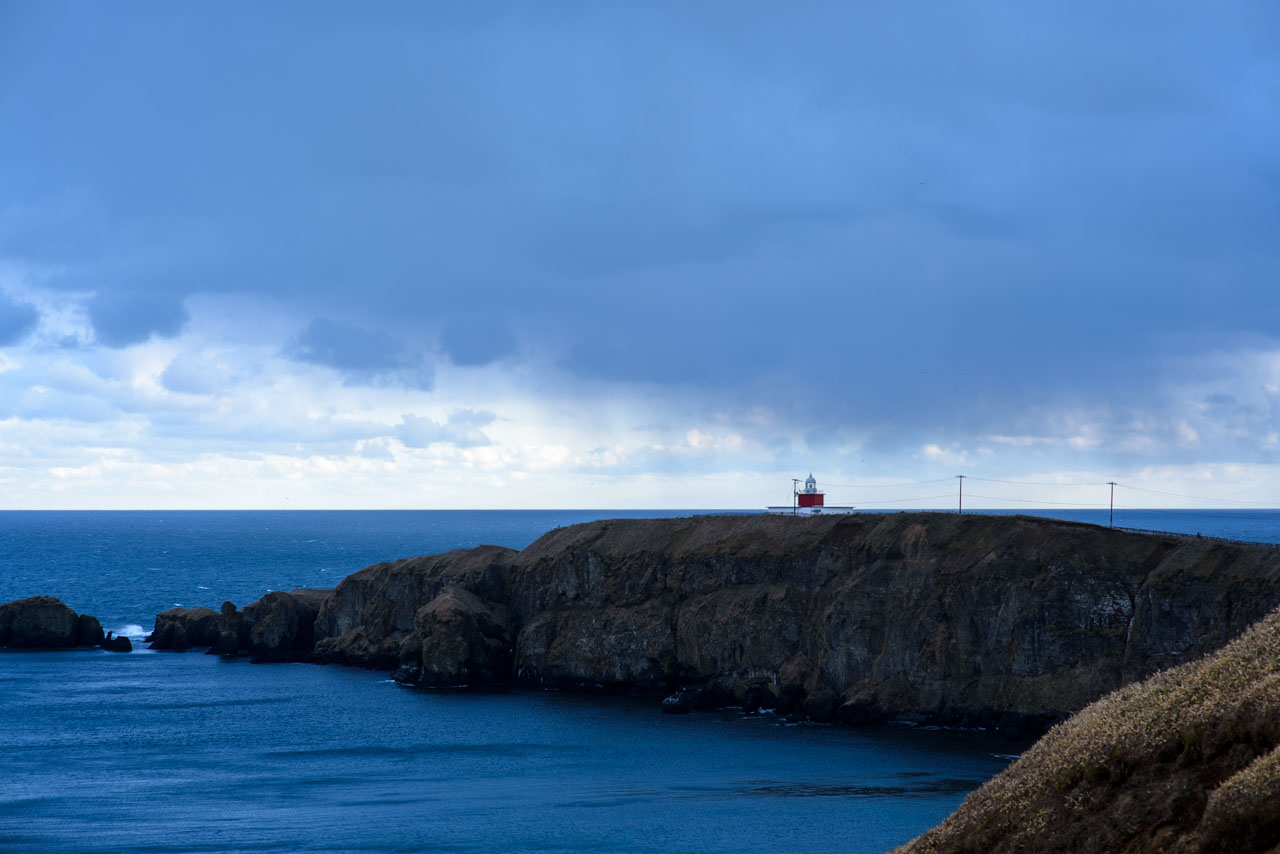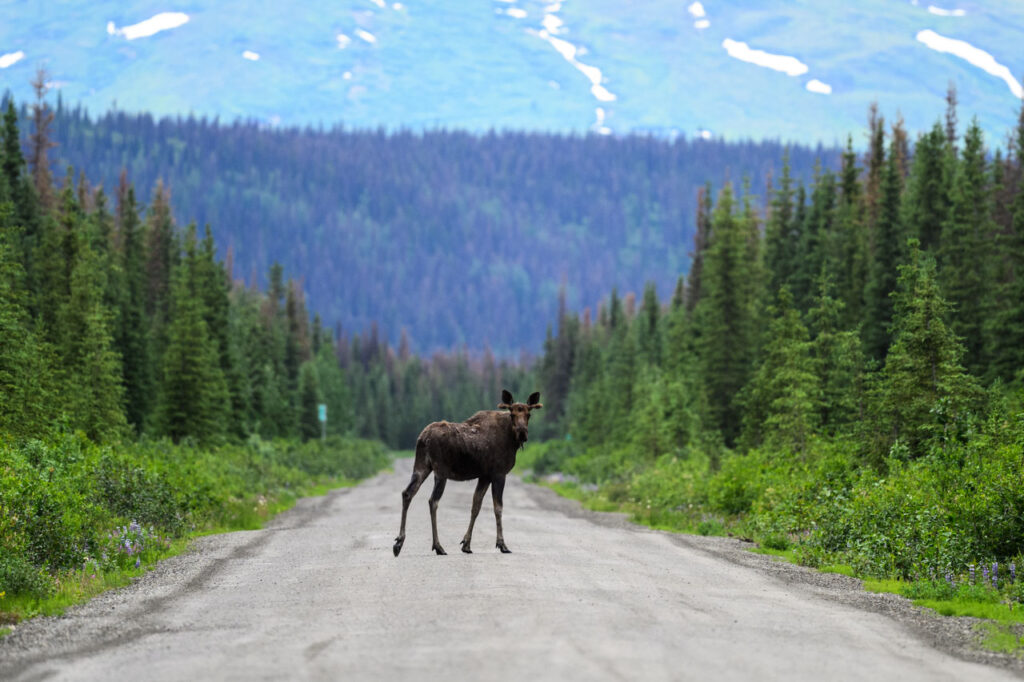
道東 2日目 羅臼 / Eastern Hokkaido Day 2 Rausu
Bettoga (別当賀) to Rausu (羅臼)
Leaving the Fureshima Marshland, I headed for Rausu, stopping at Lake Furenko (風蓮湖) and the Notsuke (野付) Peninsula.

The standing rows of dead trees are famous for the Narawara and Todowara trees on the Notsuke Peninsula, but they could also be seen along the Furenko Lake.

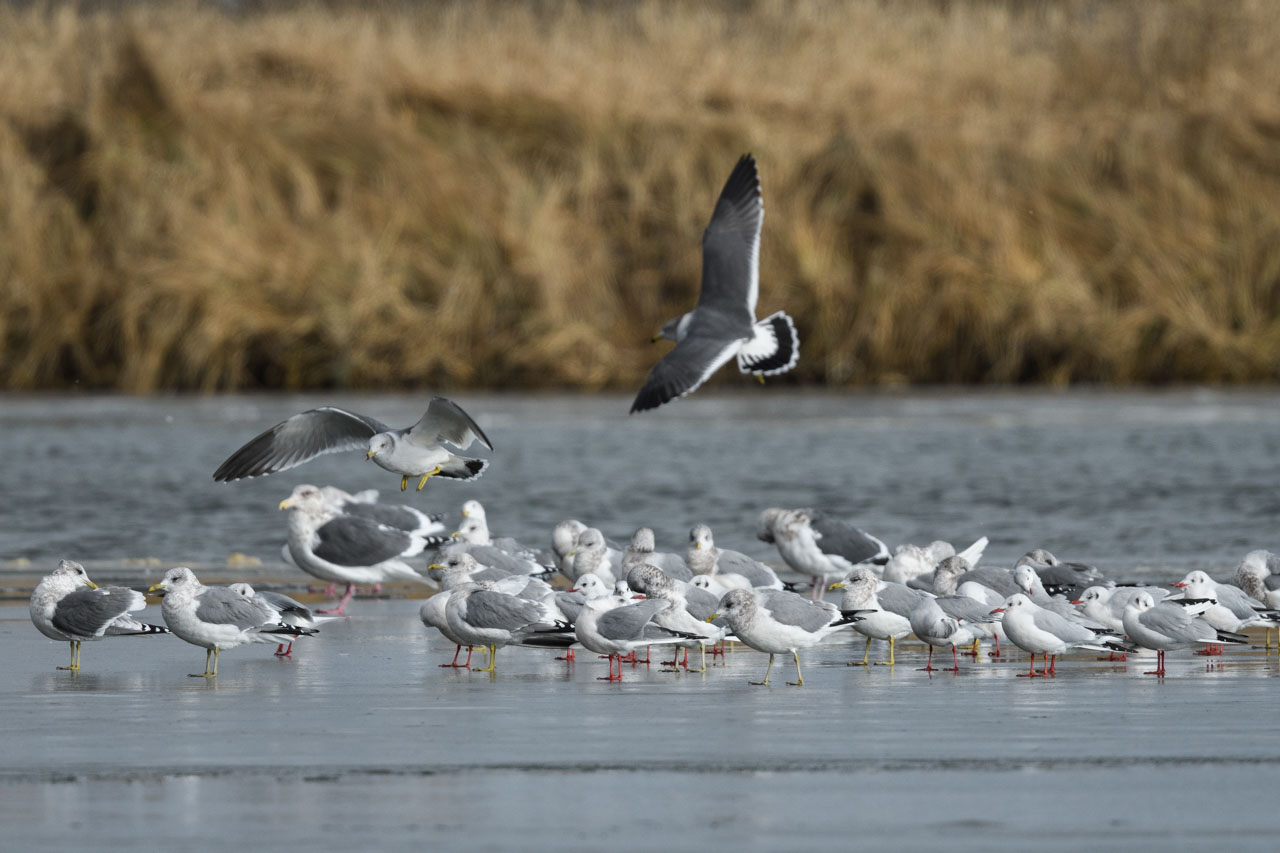
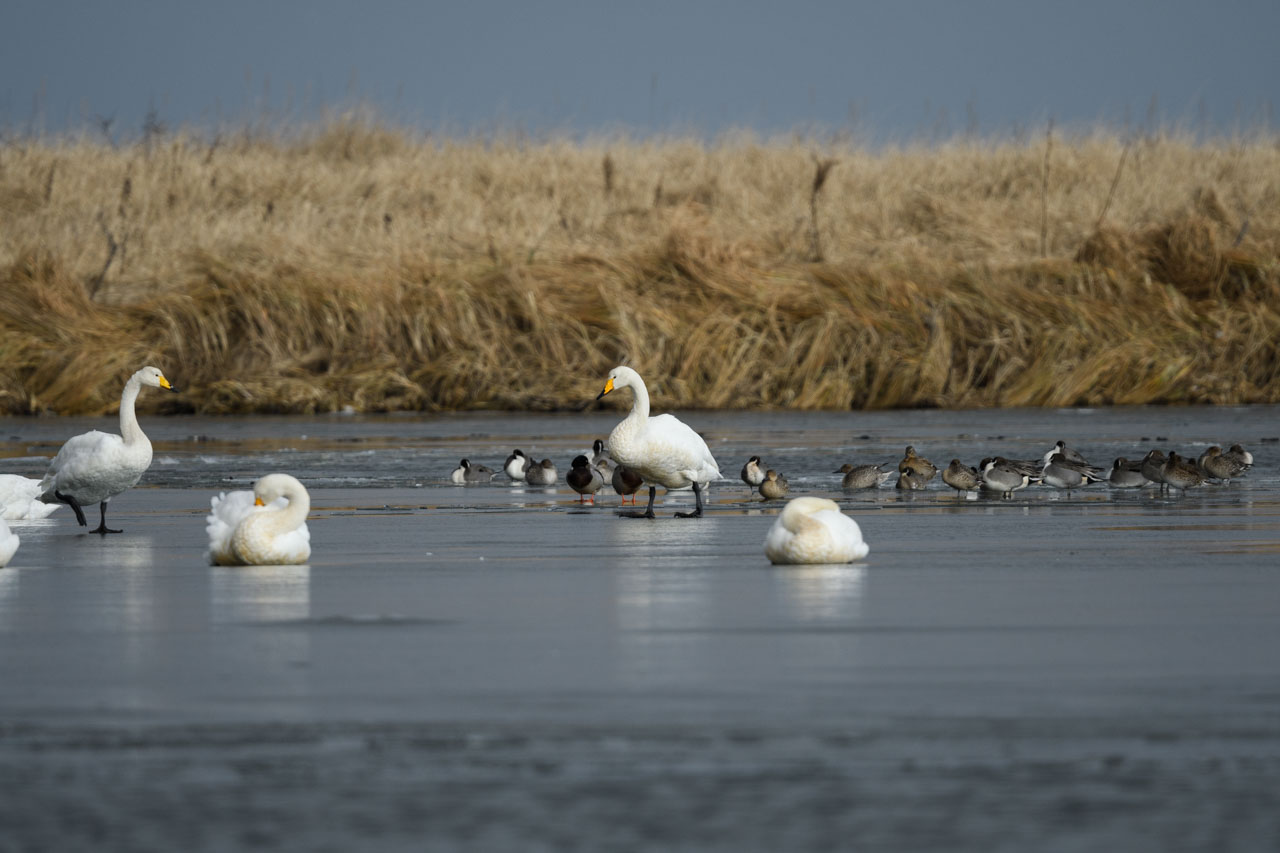

The Notsuke Peninsula, with its 30 km long sandbar, is one of the places I wanted to see in detail this time. In addition to its unique scenery, the peninsula is a good place for bird watching. The tip of the peninsula is known to be visited by Snow Bunting. Although my main plan was to visit the next day, I decided to stop by for a preliminary inspection and, if possible, to explore the area.
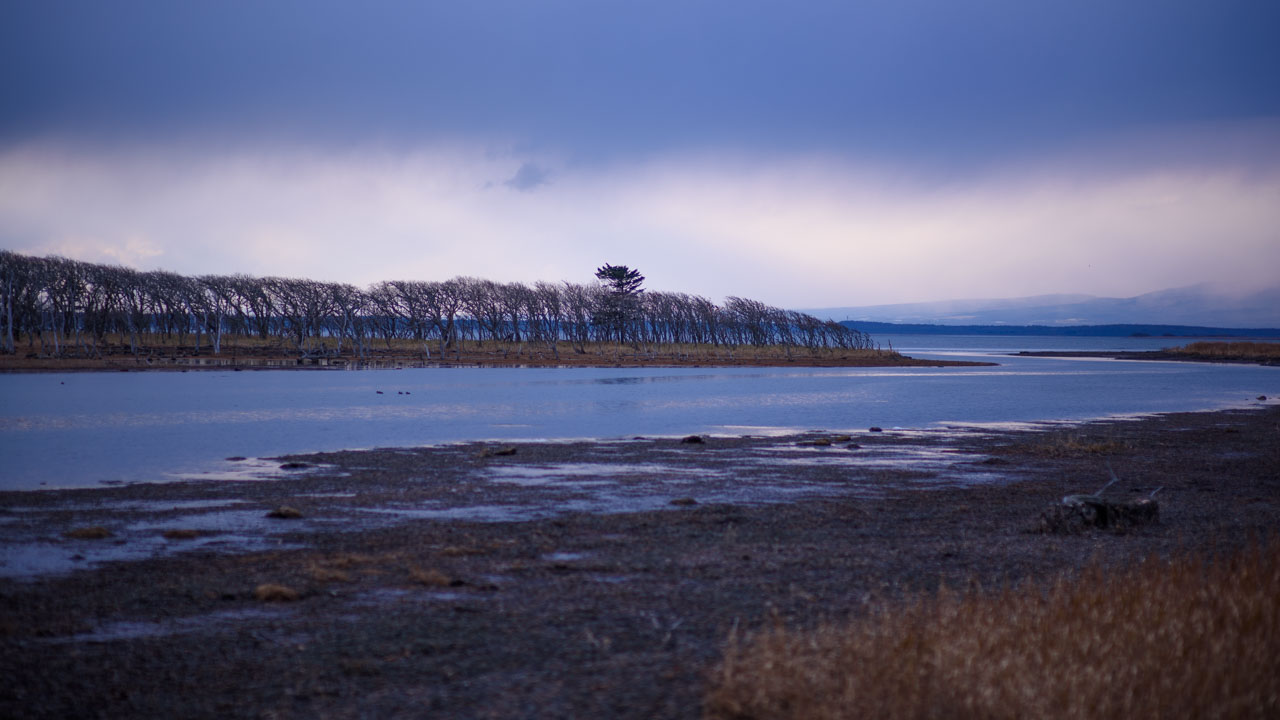

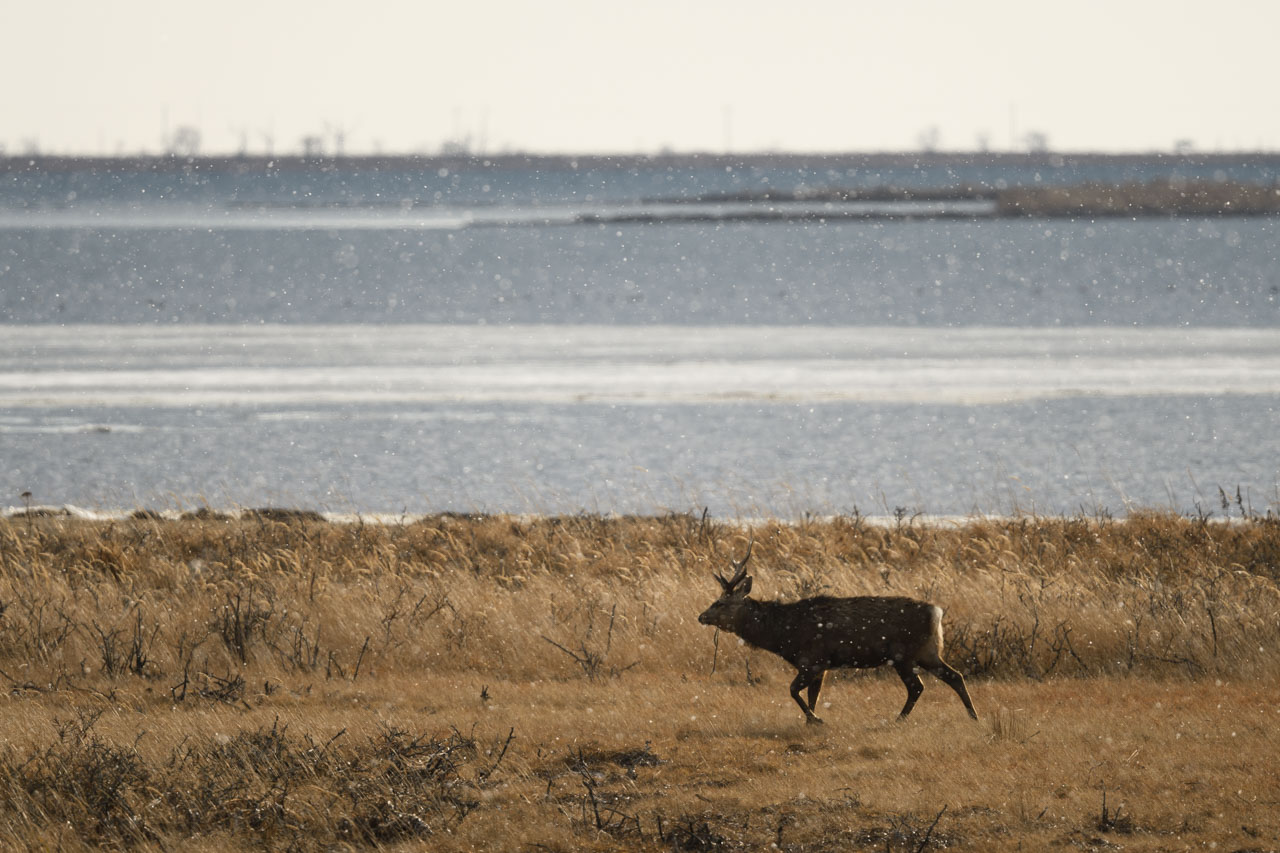
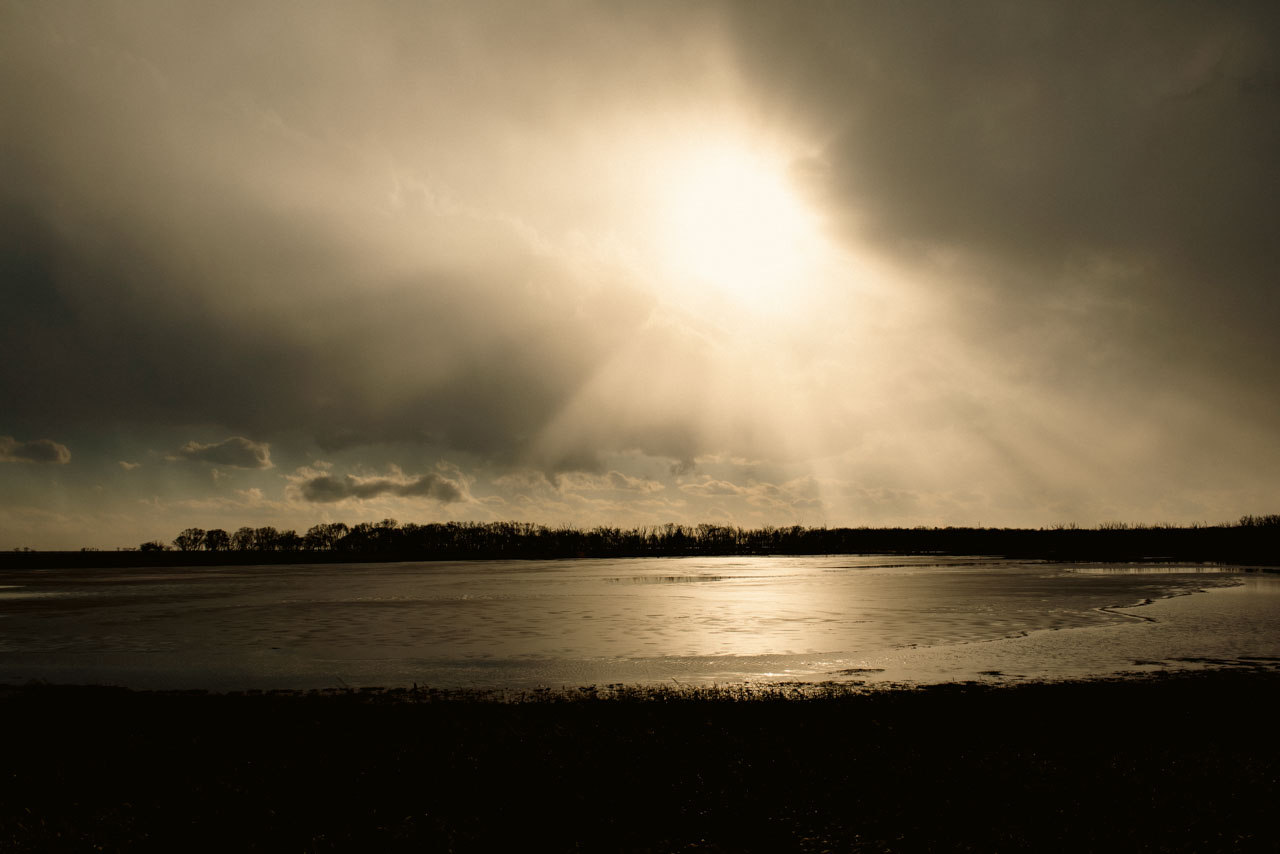
After driving for a while, you will find a nature center. A little further on is a dirt road, and you need to apply for a permit to drive in. There seems to be no restriction on the issuance of the permit, but you must go there and return during the center’s business hours (9:00 am to 4:00 pm).
When I asked a staff member at the center, who appeared to be a veteran ranger, about the snow bunting, he replied that it would take two hours just to get to the tip and back, and that it was practically impossible to do so today.
Anyway, what made me a little uncomfortable was that this person seemed to be making fun of me from beginning to end. I was also a young looking person, so I guess he thought I was an inexperienced person looking for a cute bird I saw on social networking sites! I wonder if it was like that?
Their job is to broaden the base of people who are familiar with nature, and I guess that is the purpose of the center. I would like to see the center make positive suggestions on how to increase the probability of success and enjoy the experience, rather than just saying that it is impossible for an amateur to go out alone.
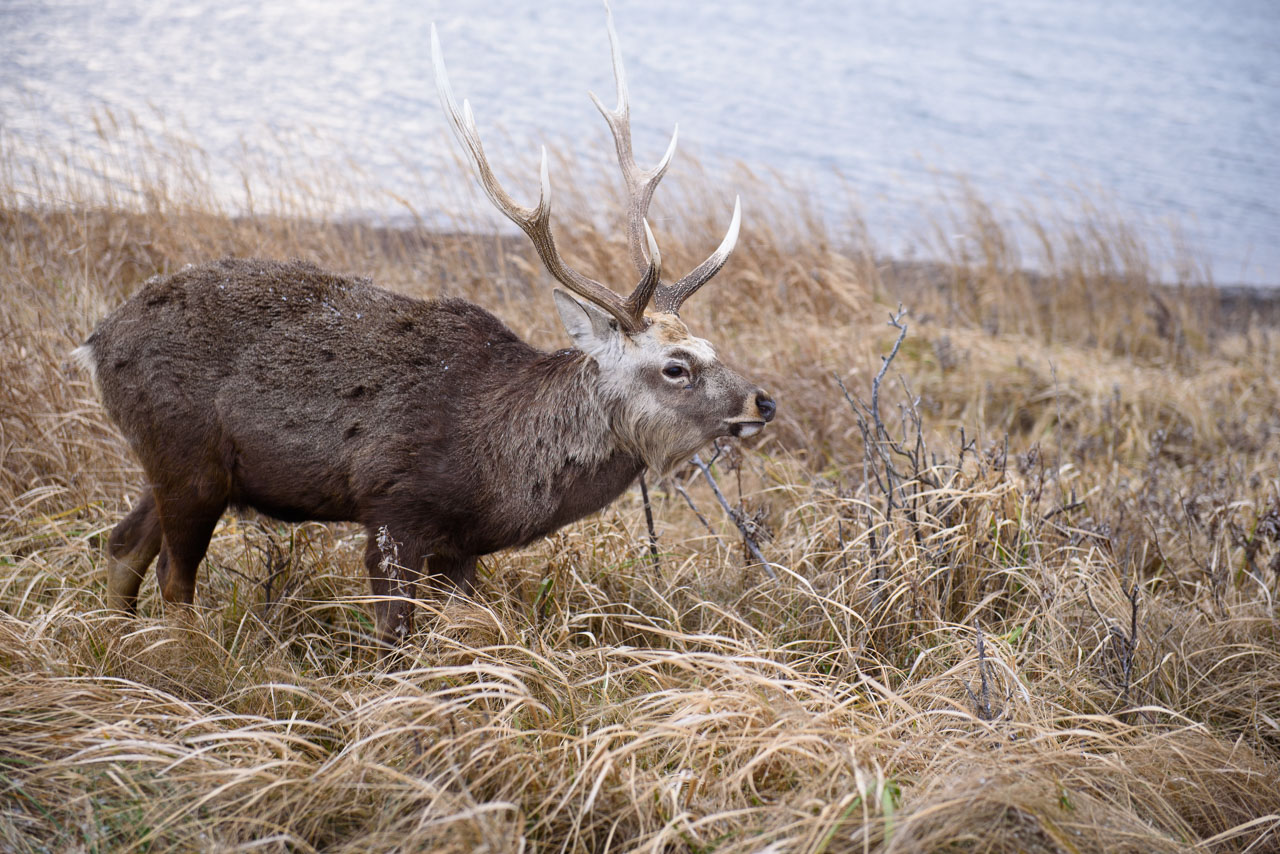
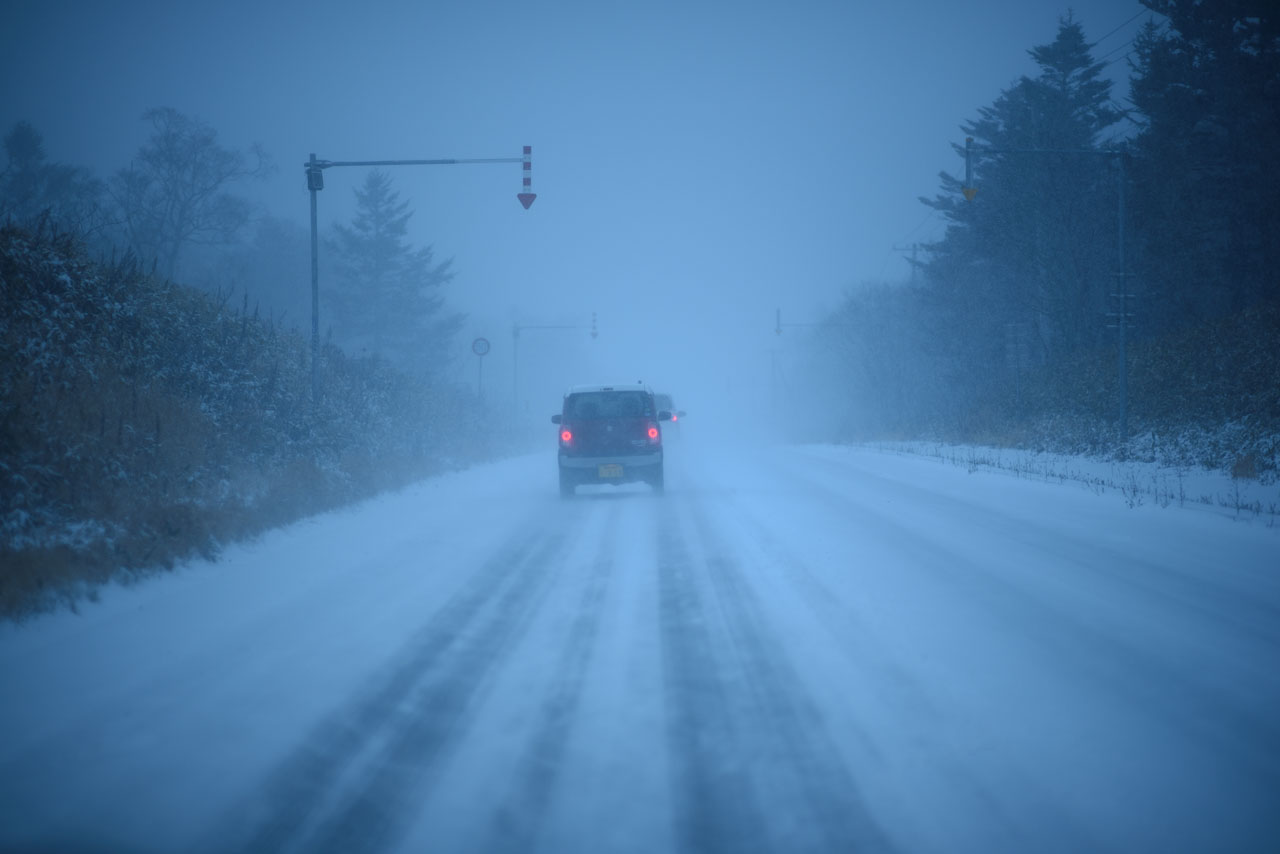
In Rausu, I stayed at the Eagle Inn (washi-no yado). This place is famous for the endangered Blakiston’s Fish Owl that can be observed in the stream in front of it. Fish are released in part of the stream, and special lighting makes it easy to photograph them.
Check in at 4:00 p.m. and prepare the equipment. Guests can observe the owls coming right in front of their rooms from the shortest distance. Visitors who only want to photograph the owls will be able to view them from a separate house located some distance away. Since there is no need to find a spot and unlimited observation time is available, staying overnight is recommended if possible.
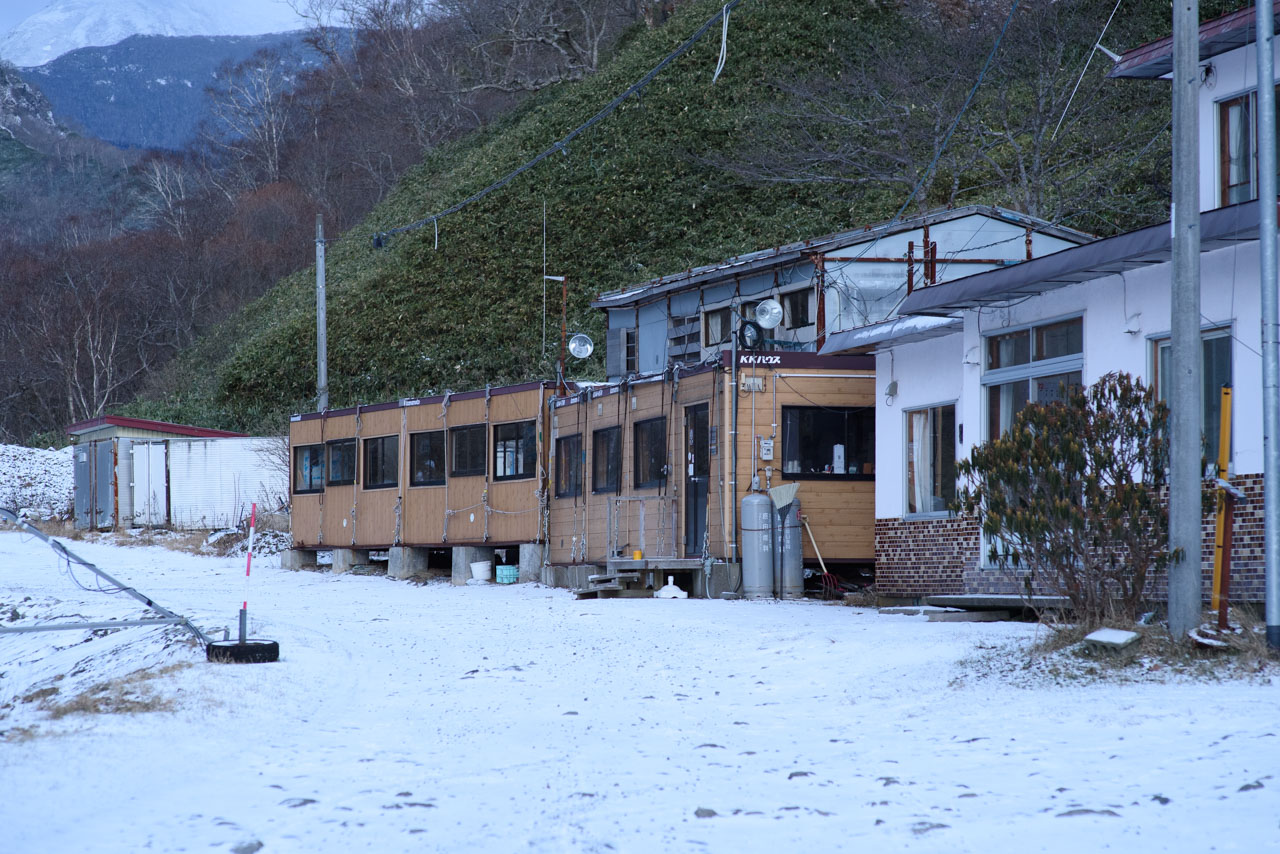
The day before, the owl had arrived at 4:30 p.m. I quickly took a bath.
The target came immediately.

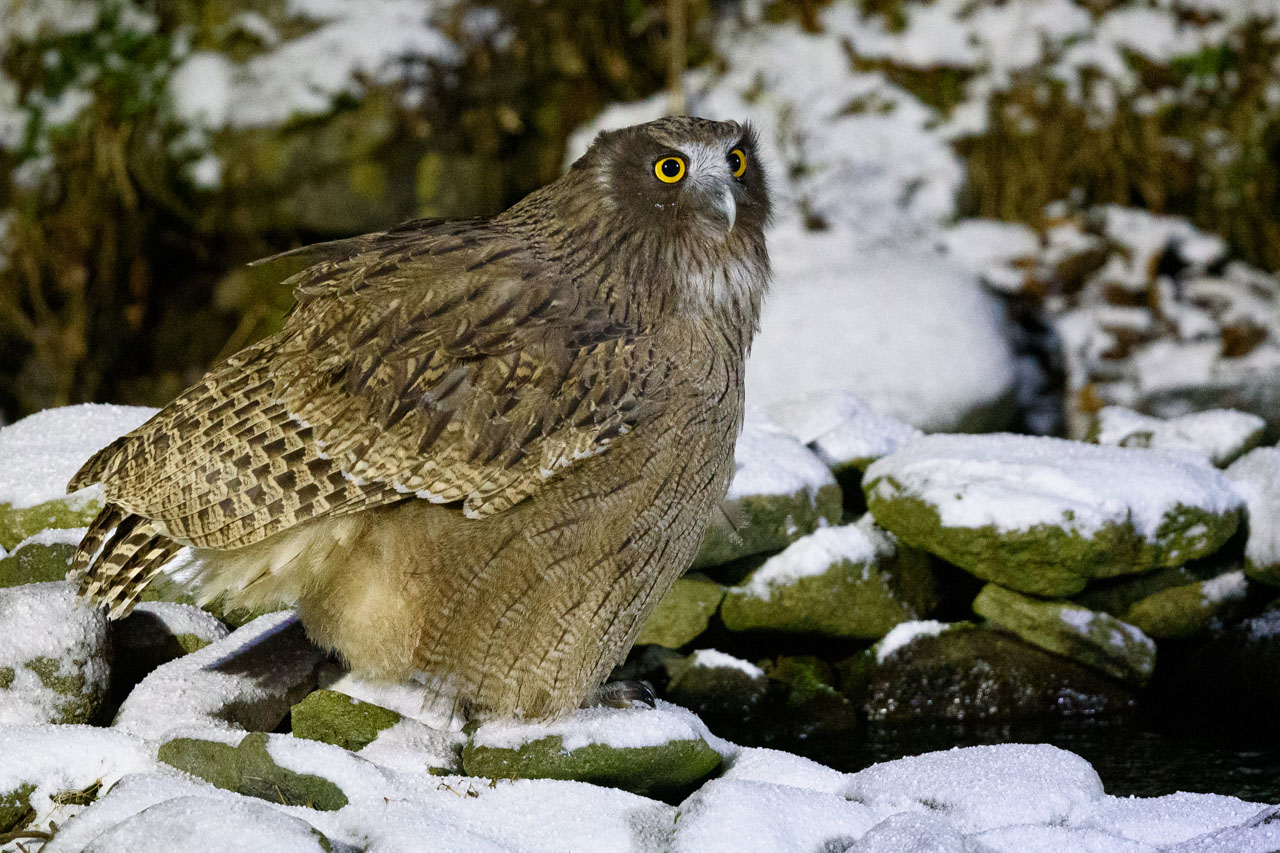
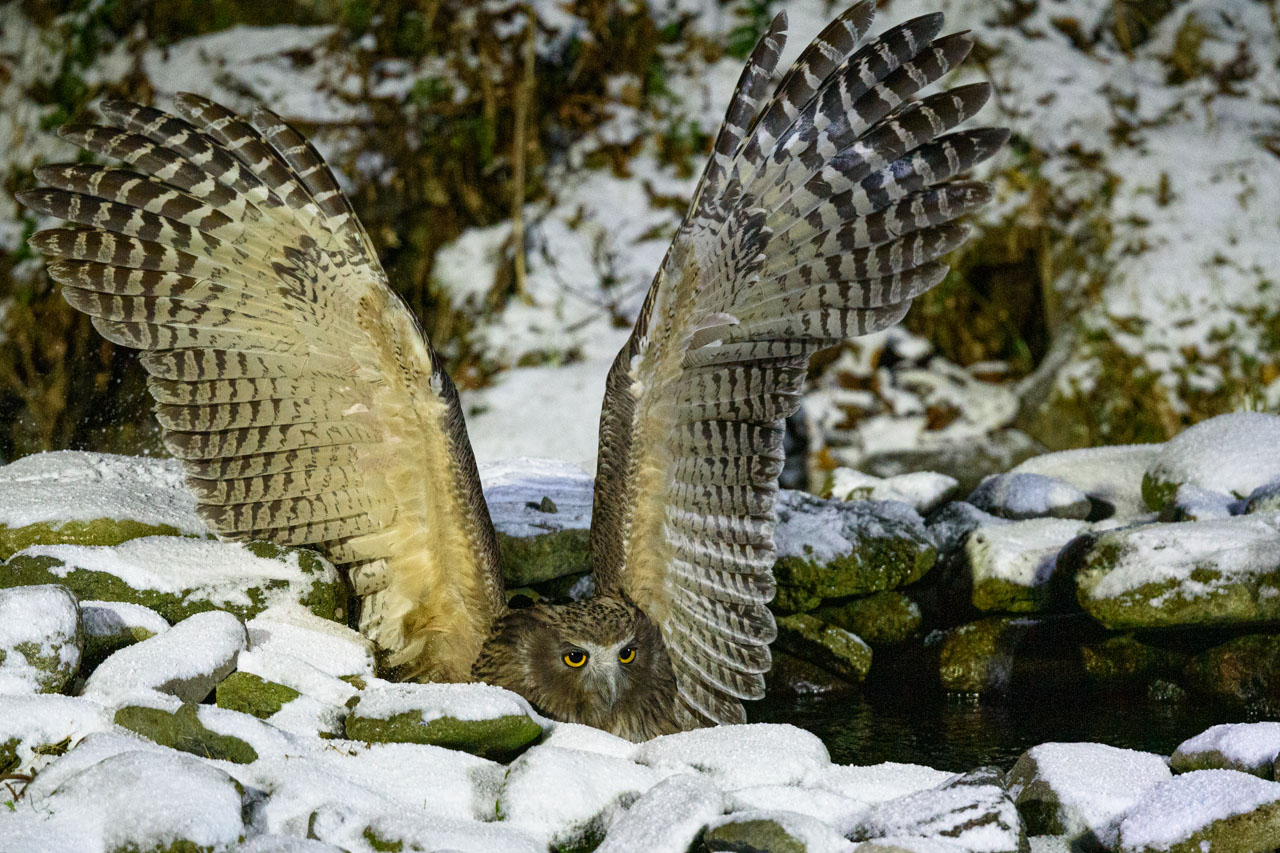
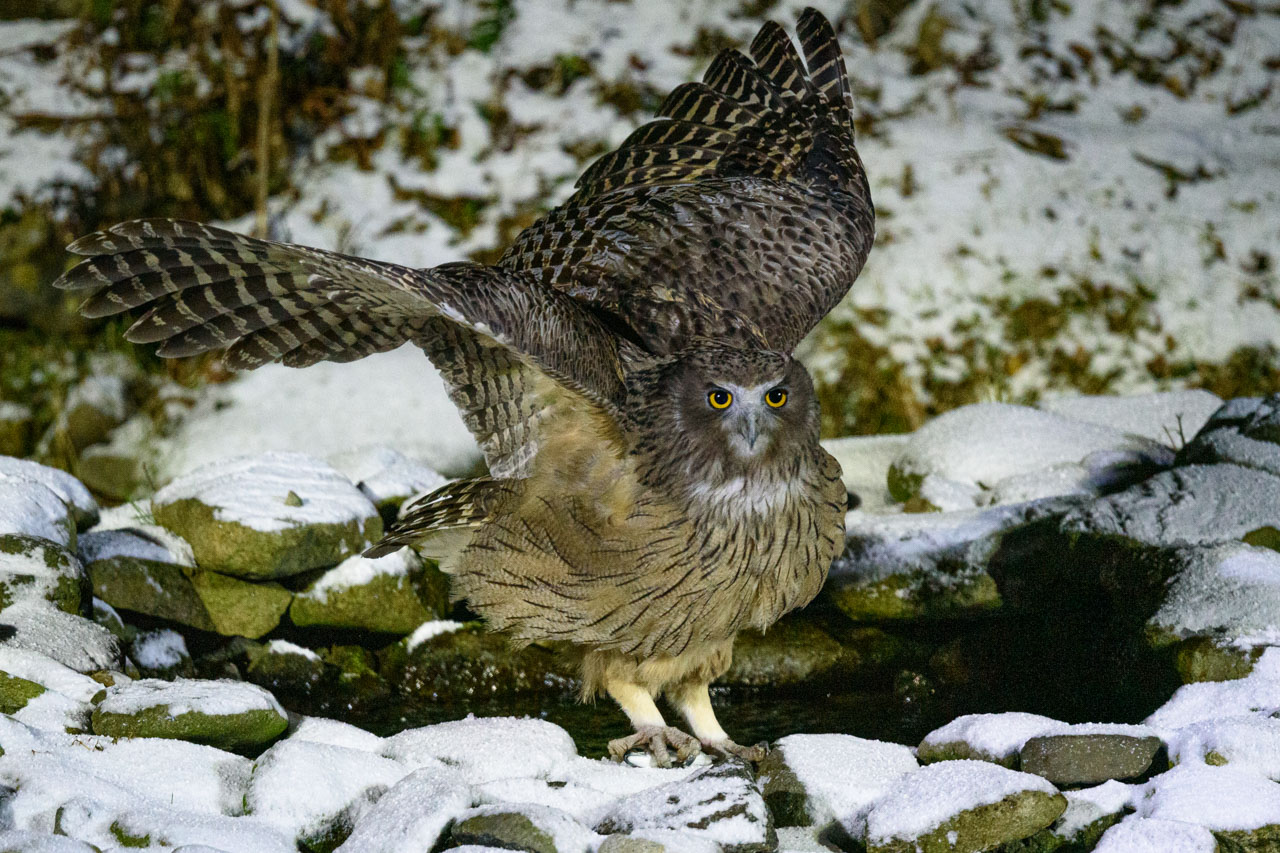
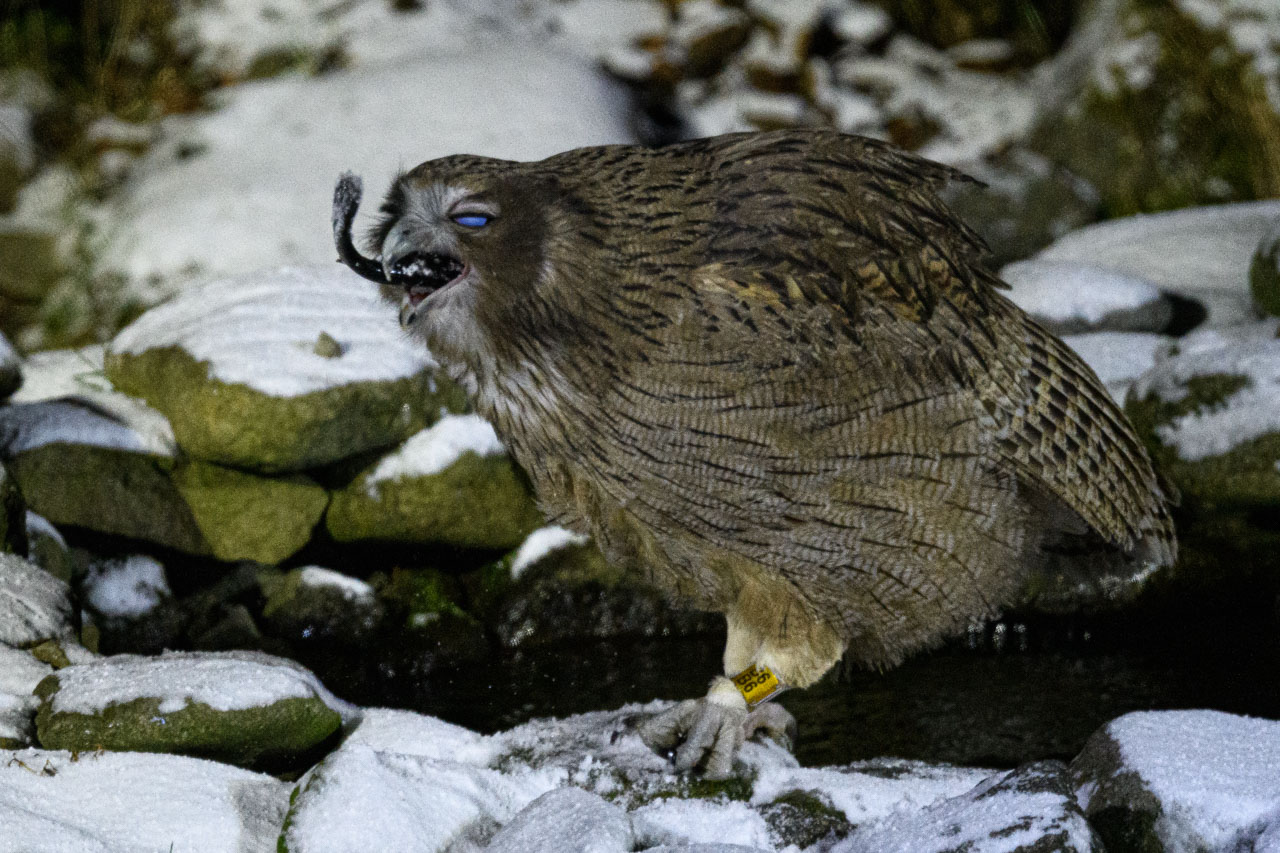
The lighting seems to be a pulse with a period slightly shorter than 1/80, so shooting at a shutter speed of 1/80 stops the motion like a strobe. For a while, I was shooting at 1/90 because the camera was set to 1/2 step, but the images were sometimes vignetted. On the other hand, if you slow down the speed to 1/10, the motion becomes a frame-by-frame afterimage. Because of the low light level, it is necessary to increase the sensitivity to a reasonable level.

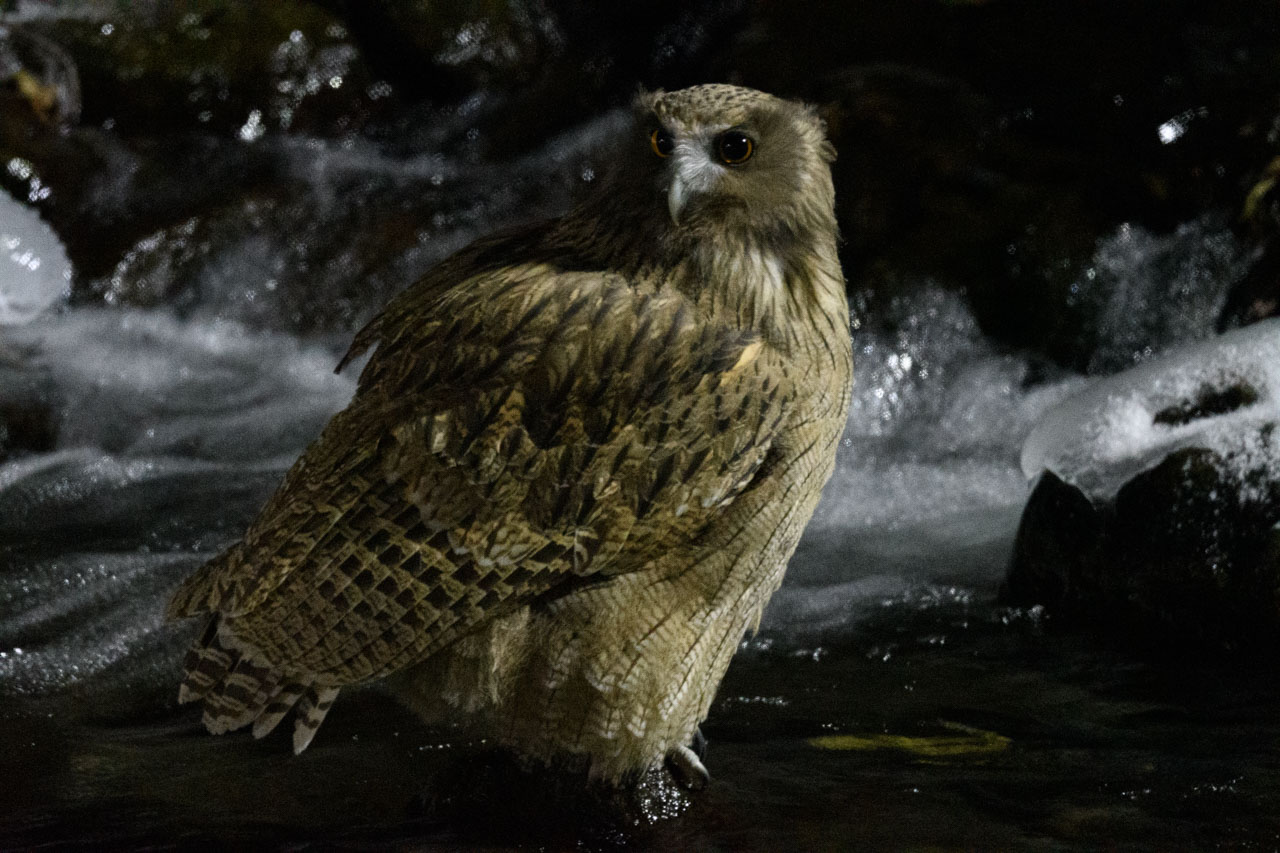
Two birds appeared repeatedly that day, making it difficult to decide when to have dinner.
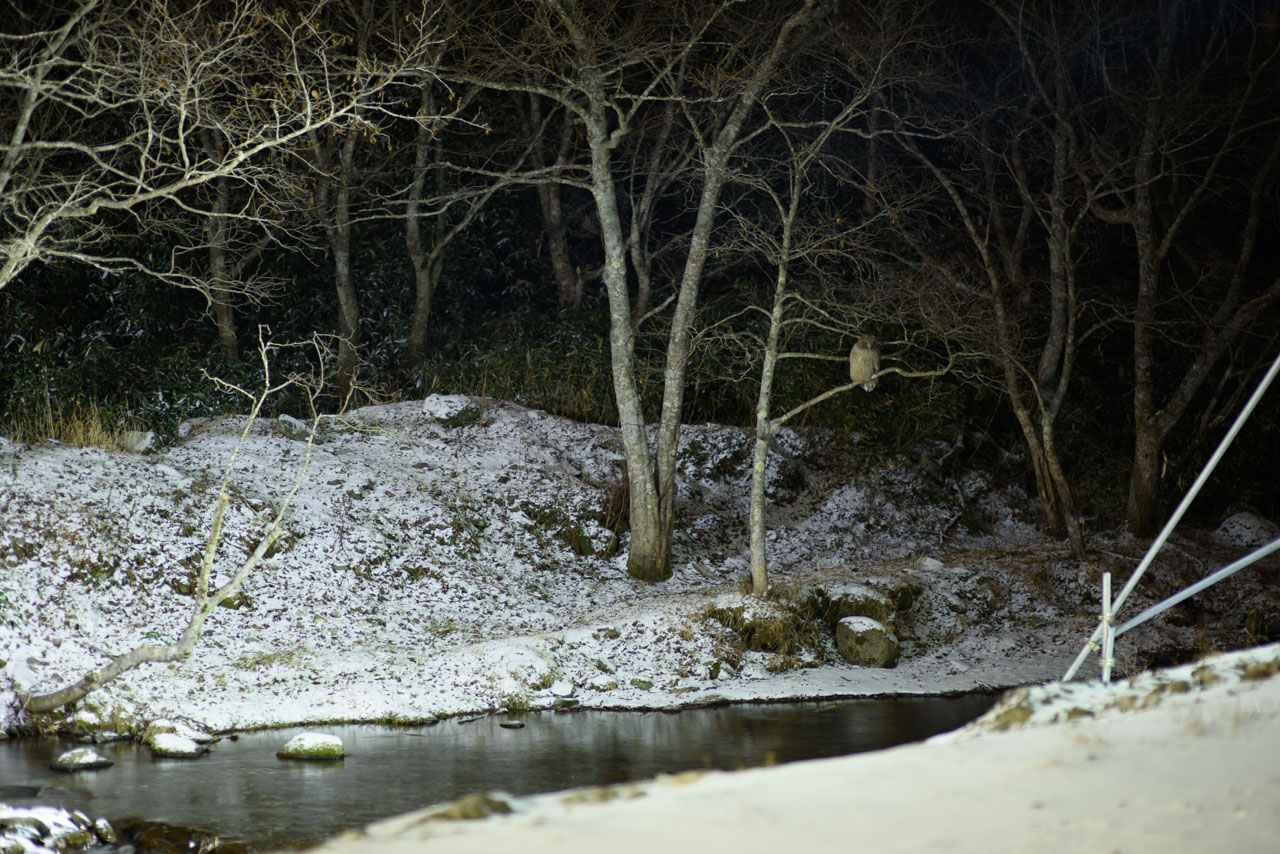

This Eagle Inn is booked up from spring (10 months in advance), mainly by foreign visitors in February, when many visitors come to the inn for drift ice. Since Blakiston’s Fish Owl has nothing to do with drift ice, it was a good decision to stay in December.
Continued on Day 3
